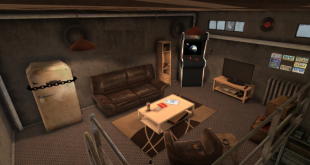Escape rooms became standard in North America, Europe, and East Asia within the 2010s. Permanent escape rooms in fastened locations were 1st opened in Asia and followed later in European countries, Serbia, Australia, New Zealand, Russia, and South America. For live virtual escape games visit Online Escape Room Singapore .
In 21st century
The 2000s were an amount of relative public and investment indifference to commercially obtainable VR technologies. In Singapore, for real-life escape gaming experience Online Escape Room Singapore. In 2001, SAS Cube (SAS3) became the primary PC-based boxlike area, developed by Z-A Production (Maurice Benayoun, David Nahon), Barco, and Clarté. it had been put in in Laval, France.

The SAS library gave birth to Virtools VRPack. In 2007, Google introduced Street read, a service that shows broad views of associate degree increasing variety of worldwide positions like roads, indoor buildings, and rural areas. It additionally options a stereoscopic 3D mode, introduced in 2010.
2010–present
An inside read of the sense organ Rift Crescent Bay example receiver
In 2010, linksman Luckey designed the primary example of the sense organ Rift. This example, designed on a shell of another video game receiver, was solely capable of motility trailing. However, it boasted a 90-degree field of vision that was antecedently unseen within the client market at the time. Distortion problems arising from the lens accustomed to produce the sector of vision were corrected for by computer code written by John Carmack for a version of Doom three. this primary style would later function as a basis from that the later styles came. In 2012, the Rift is conferred for the primary time at the E3 game trade event by Carmack. In 2014, Facebook purchased sense organ VR for what at the time was expressed as $2 billion however later discovered that the additional correct figure was $3 billion. This purchase occurred once the primary development kits ordered through Oculus’ 2012 Kickstarter had shipped in 2013 however before the shipping of their second development kits in 2014. ZeniMax, Carmack’s former leader, sued sense organ and Facebook for taking company secrets to Facebook; the decision was in favor of ZeniMax, settled out of court later.
In 2013, Valve discovered and freely shared the breakthrough of low-persistence shows that build a lag-free and smear-free display of VR content attainable. This was adopted by sense organ and was employed in all their future headsets. In early 2014, Valve showed off their SteamSight example, the precursor to each client headsets discharged in 2016. It shared major options with the patron headsets as well as separate 1K displays per eye, low persistence, point trailing over an outsized space, and physicist lenses. HTC and Valve proclaimed the video game receiver HTC Vive and controllers in 2015. The set enclosed trailing technology is known as a tower, that used wall-mounted “base stations” for point trailing mistreatment infrared emission.
The Project deity (PlayStation VR) receiver worn at Gamescom 2015
In 2014, Sony proclaimed Project deity (its code name for the PlayStation VR), a video game receiver for the PlayStation four-game console. In 2015, Google proclaimed Cardboard, a homemade stereoscopic viewer: the user places their smartphone within the cardboard holder, that they go down their head. Michael Naimark was appointed Google’s first-ever ‘resident artist’ in their new VR division. The Kickstarter campaign for Gloveone, a combination of gloves providing motion trailing and tactual feedback, was with success funded, with over $150,000 in contributions. additionally, in 2015, Razer undraped its open-supply project OSVR.
Smartphone-based budget receiver Samsung Gear VR in demolished state
By 2016, there has been a minimum of 230 corporations developing VR-related product. Amazon, Apple, Facebook, Google, Microsoft, Sony, and Samsung all had dedicated AR and VR teams. Dynamic binaural audio was common to most headsets discharged that year. However, tactual interfaces weren’t well developed, and most hardware packages incorporated button-operated handsets for touch-based interactivity. Visually, displays were still of a low-enough resolution and frame rate that pictures were still recognizable as virtual.
In 2016, HTC shipped its initial units of the HTC Vive SteamVR receiver. This marked the primary major industrial unharness of sensor-based trailing, providing free movement of users at intervals an outlined house. A patent filed by Sony in 2017 showed they were developing an identical location trailing technology to the Vive for PlayStation VR, with the potential for the event of a wireless receiver.
In 2019, the sense organ discharged the sense organ Rift S and a standalone receiver, the sense organ Quest. These headsets used wrong-side-out trailing compared to external outside-in trailing seen in previous generations of headsets.
Later in 2019, Valve discharged the Valve Index. Notable options embody a 130° field of reading, off-ear headphones for immersion and luxury, open-handed controllers which permit for individual finger trailing, front-facing cameras, and a front slot meant for extensibility.
In 2020, the sense organ discharged the sense organ Quest two. Some new options embody a sharpy screen, reduced worth, and inflated performance. Facebook currently needs the user to log in with a Facebook account to use the new receiver.

